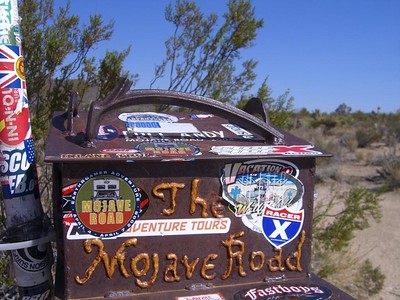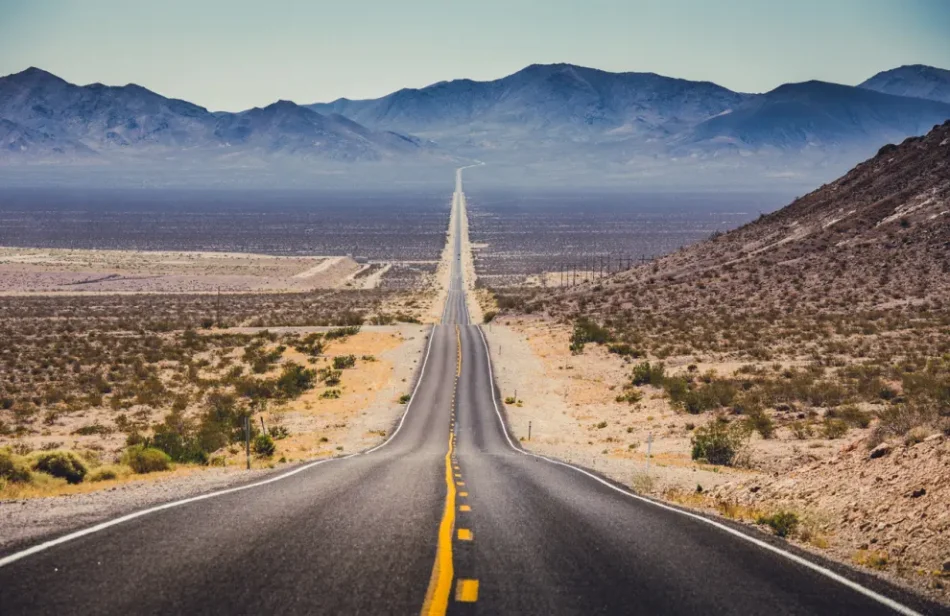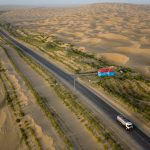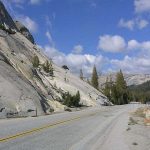Are you ready to rev up your engines and embark on an epic journey through the Mojave Desert? Buckle up, because we’re about to hit the open road and explore California State Route 14, also known as the Mojave Desert Road. Get ready for a wild ride filled with breathtaking landscapes, quirky pit stops, and a few surprises along the way!
Where is it?
Located in the Golden State of California, State Route 14 winds its way through the Mojave Desert, stretching from the bustling city of Los Angeles to the charming town of Ridgecrest. Prepare to be mesmerized by the stark beauty of the desert landscape as you traverse this iconic highway.

california.com
When to Go to the Mojave Desert Road?
The Mojave Desert Road is best tackled during the cooler months, typically from late fall to early spring. Summer temperatures in the Mojave Desert can soar to scorching levels, making it less than ideal for road trips. So, grab your shades, pack some sunscreen, and hit the road when the weather is just right!
Mojave Desert Rod Trip Tips
When traversing the Mojave Desert road, several difficulties and dangers warrant careful consideration. Here’s what to keep in mind while driving:
- Extreme Temperatures: The Mojave Desert is known for its scorching daytime temperatures and chilly nights. Be prepared for temperature fluctuations and ensure your vehicle’s cooling system is in optimal condition to prevent overheating.
- Limited Services: Services such as gas stations, rest areas, and emergency assistance may be sparse along the desert road. Fill up your gas tank before embarking on your journey and carry extra water, food, and emergency supplies in case of unexpected delays.
- Remote Location: The Mojave Desert is a vast and remote expanse, with long stretches of uninhabited terrain between towns. Stay vigilant and plan your route carefully, as getting stranded in the desert can be perilous.
- Sand and Dust: Blowing sand and dust storms are common occurrences in the desert, reducing visibility and posing a hazard to drivers. Exercise caution during windy conditions and pull over if visibility becomes dangerously low.
- Wildlife Encounters: The Mojave Desert is home to a variety of wildlife, including desert tortoises, coyotes, and rattlesnakes. Watch for wildlife crossing the road and drive cautiously, especially at dawn and dusk when animals are most active.
- Rough Terrain: Some sections of the Mojave Desert road may feature rough or uneven terrain, including gravel, sand, and rocky surfaces. Drive at a moderate speed and be prepared for sudden changes in road conditions.
- Navigation Challenges: GPS signals may be unreliable in remote desert areas, so it’s essential to bring a paper map and familiarize yourself with your route beforehand. Pay attention to road signs and landmarks to ensure you stay on course.
- Heat Exhaustion: The desert’s intense heat can lead to heat-related illnesses such as heat exhaustion and heatstroke. Stay hydrated, wear lightweight, breathable clothing, and take frequent breaks in shaded areas to avoid overheating.
- Carry essential supplies like water, food, first aid kits, and emergency communication devices, as well as advice on how to stay safe in extreme weather conditions.
- Type of Vehicle : When it comes to conquering the Mojave Desert Road, any road-worthy vehicle will do the trick. Whether you’re cruising in a classic convertible, a rugged SUV, or a trusty sedan, the key is to ensure your vehicle is in tip-top shape for the journey ahead. Check your tires, brakes, and fluids before hitting the road, and don’t forget to fuel up before venturing into the desert wilderness!
Quirky Pit Stops and Hidden Gems
No road trip through the Mojave Desert would be complete without a few quirky pit stops and hidden gems along the way.
- Keep your eyes peeled for roadside attractions like the iconic El Mirage Dry Lake Bed, where you can channel your inner speed demon and tear up the desert floor.
- Pay a visit to the otherworldly Trona Pinnacles, a surreal landscape of towering rock formations straight out of a sci-fi movie.
- Don’t forget to snap a selfie at the iconic Mojave Desert Road sign – it’s the ultimate souvenir of your desert adventure!
- Located near the town of Twentynine Palms, Joshua Tree National Park is renowned for its otherworldly landscape, characterized by rugged rock formations, ancient Joshua trees, and vast desert vistas. Visitors can enjoy hiking, rock climbing, stargazing, and wildlife viewing within the park’s boundaries.
- Spanning over 1.6 million acres, the Mojave National Preserve offers a diverse array of desert landscapes, including sand dunes, volcanic cinder cones, and Joshua tree forests. Highlights include the Kelso Dunes, Hole-in-the-Wall rock formations, and the historic Kelso Depot.
- Situated along the eastern edge of the Mojave Desert, Red Rock Canyon State Park features striking red sandstone formations, scenic hiking trails, and opportunities for rock climbing and photography. The park is located near the town of Ridgecrest and is known for its dramatic geological features.
- While technically part of the larger Mojave Desert ecosystem, Death Valley National Park deserves special mention for its extreme temperatures, vast salt flats, and towering sand dunes. Highlights include Badwater Basin, the lowest point in North America, and Dante’s View, which offers panoramic vistas of the desert below.
- The historic Route 66, also known as the “Mother Road,” passes through the Mojave Desert and offers travelers a glimpse into America’s roadside culture and nostalgia. Visit iconic landmarks along the route, such as the Bagdad Café in Newberry Springs and the Mojave Desert Museum in Barstow.
- Explore abandoned mining towns and remnants of the Old West scattered throughout the Mojave Desert. Key ghost towns include Calico, a well-preserved mining town near Barstow, and Rhyolite, located near Death Valley.
- Aviation enthusiasts can visit the Mojave Air and Space Port, a renowned facility for aerospace research, development, and testing. Tour the aircraft boneyard and witness cutting-edge aerospace technology in action.
- Located within the Mojave National Preserve, the historic Kelso Depot serves as a visitor center and museum, showcasing the history of the region’s railroad and mining heritage. Explore exhibits on the desert ecosystem, railway history, and cultural significance of the area.
So, there you have it – a wild and whimsical journey through the Mojave Desert Road. Whether you’re seeking thrills, adventure, or simply a change of scenery, this iconic highway has something for everyone. So, rev up your engines, roll down the windows, and hit the road for an unforgettable desert escapade. The Mojave Desert is calling – are you ready to answer the call?
The Old Mojave Road Trail
The origins of the Mojave Road Trail trace back to ancient times when indigenous peoples traversed the vast desert landscape for trade and hunting. Native American tribes such as the Mojave, Chemehuevi, and Paiute traveled along established routes through the Mojave Desert, leaving behind traces of their presence in the form of petroglyphs, rock art, and archaeological sites.
Colonial Era: In the 16th century, Spanish explorers and missionaries ventured into the Mojave Desert in search of trade routes and potential settlements.
During the early 19th century, the Mojave Road Trail gained prominence as a vital trade route linking the Spanish colonies of California and New Mexico. Traders, trappers, and explorers traversed the arid expanse of the Mojave Desert.
Military Route: In the mid-19th century, the Mojave Road Trail assumed military significance as the United States expanded westward. In 1846, during the Mexican-American War, General Stephen Watts Kearny led the “Army of the West” along the Mojave Road Trail on a mission to capture California.
In 1860, the first transcontinental telegraph line was completed, following the route of the Mojave Road Trail. The telegraph line facilitated communication between the East and West Coasts, marking a significant milestone in the development of the American West.
Mojave Road Mailbox

Mojave Road Mailbox, photo by Heather Vescent
The Mojave Road Mailbox is a unique and iconic landmark that serves as a cherished symbol for travelers venturing along the Trail. This makeshift structure is not used for postal services but rather as a testament to the camaraderie and adventurous spirit of those who traverse this route. The Mojave Road Mailbox has become a popular destination for curious travelers and history enthusiasts from around the world.
Its appeal lies not only in its unique form but also in its role as a repository of personal messages, thoughts, and greetings left by fellow explorers, creating a tangible link between past and present travelers. As visitors add their own contributions to the mailbox’s eclectic collection of items, they become part of a legacy that transcends time and space, reminding us of the profound connection between humanity and the rugged terrain of the Mojave Desert.
The Mojave Desert region and the Native American heritage
The Mojave Desert region boasts a rich Native American heritage, with several indigenous tribes calling this arid landscape home for thousands of years. Among them are the Mojave, Chemehuevi, Serrano, and Cahuilla peoples, each with unique cultures and traditions adapted to the desert environment. The Mojave, after whom the desert is named, have inhabited the Colorado River Valley for centuries, utilizing its resources for sustenance and trade.
The Chemehuevi, closely related to the Mojave, historically lived along the eastern shores of the Salton Sea and the Colorado River, honing their skills as hunters, gatherers, and fishermen. Similarly, the Serrano people occupied the San Bernardino Mountains and surrounding areas, known for their expertise in basket weaving and cultural practices deeply rooted in the desert landscape. Meanwhile, the Cahuilla people, primarily associated with Southern California, also had ties to the Mojave Desert, practicing agriculture and crafts in the Coachella Valley and beyond.
Throughout history, these indigenous communities navigated the challenges of the Mojave Desert, adapting their lifestyles to the harsh desert environment while maintaining spiritual connections to the land. They established trade networks, shared cultural knowledge, and left behind a legacy of resilience and resourcefulness that continues to shape the cultural landscape of the Mojave Desert region today.













